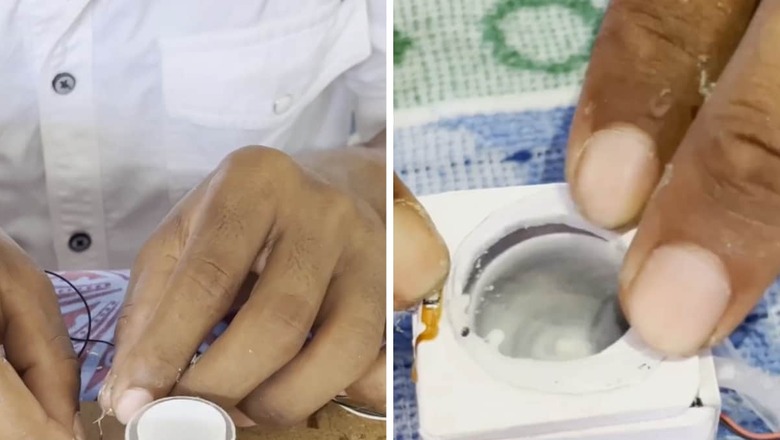
views
Prior to this achievement, he set a record by constructing the smallest air cooler. At the age of 17, Sai Tirumalaneedi created an air cooler measuring 30mm x 12.4mm x 17mm. This miniature device operates on a 1.8-volt battery, utilizing a motor, wire and a Vaseline jelly jar. His accomplishment was confirmed by the India Book of Records on March 5, 2022.
A post shared by Guinness World Records (@guinnessworldrecords)
When it comes to creating miniature marvels, the world of Guinness World Records is full of surprises. Gowrishankar Gummadidhala from Telangana, for instance, crafted the world’s smallest spoon. This diminutive utensil is so tiny that it can be held by an ant. To put its size into perspective, the wooden spoon measures just 4.5mm (0.18 inches) in length.
Ramkumar Sarangapani, another man from India, currently holds an impressive 18 record titles in the Guinness World Records and has set his sights on breaking 100. Among his many accomplishments is the creation of the smallest pack of playing cards, measuring a mere 7mm x 5mm x 4.86mm.
In another fascinating fact featuring the world’s smallest stuff, IBM Research Laboratories in San Jose, California, USA, achieved a Guinness World Record for creating the smallest stop-motion film. Titled A Boy and His Atom, the 60-second film depicts a boy named Atom playing with a ball. Remarkably, the film comprises 242 individual frames, each with a frame size of just 45 nanometers by 25 nanometers (45 x 25 billionths of a meter).
Each frame of A Boy and His Atom was created by positioning individual molecules of carbon monoxide as pixels on a copper sheet. This intricate process was carried out using a Scanning Tunneling Microscope (STM), which employs an ultra-fine metal tip to manipulate the molecules through electrical charge. Once the molecules were precisely placed for each frame, the STM scanned the entire frame, taking approximately 4 minutes and 53 seconds to build up the image recorded on film. This meticulous process was repeated for each of the 242 frames, resulting in a remarkable stop-motion film.
What's your reaction?


















Comments
0 comment